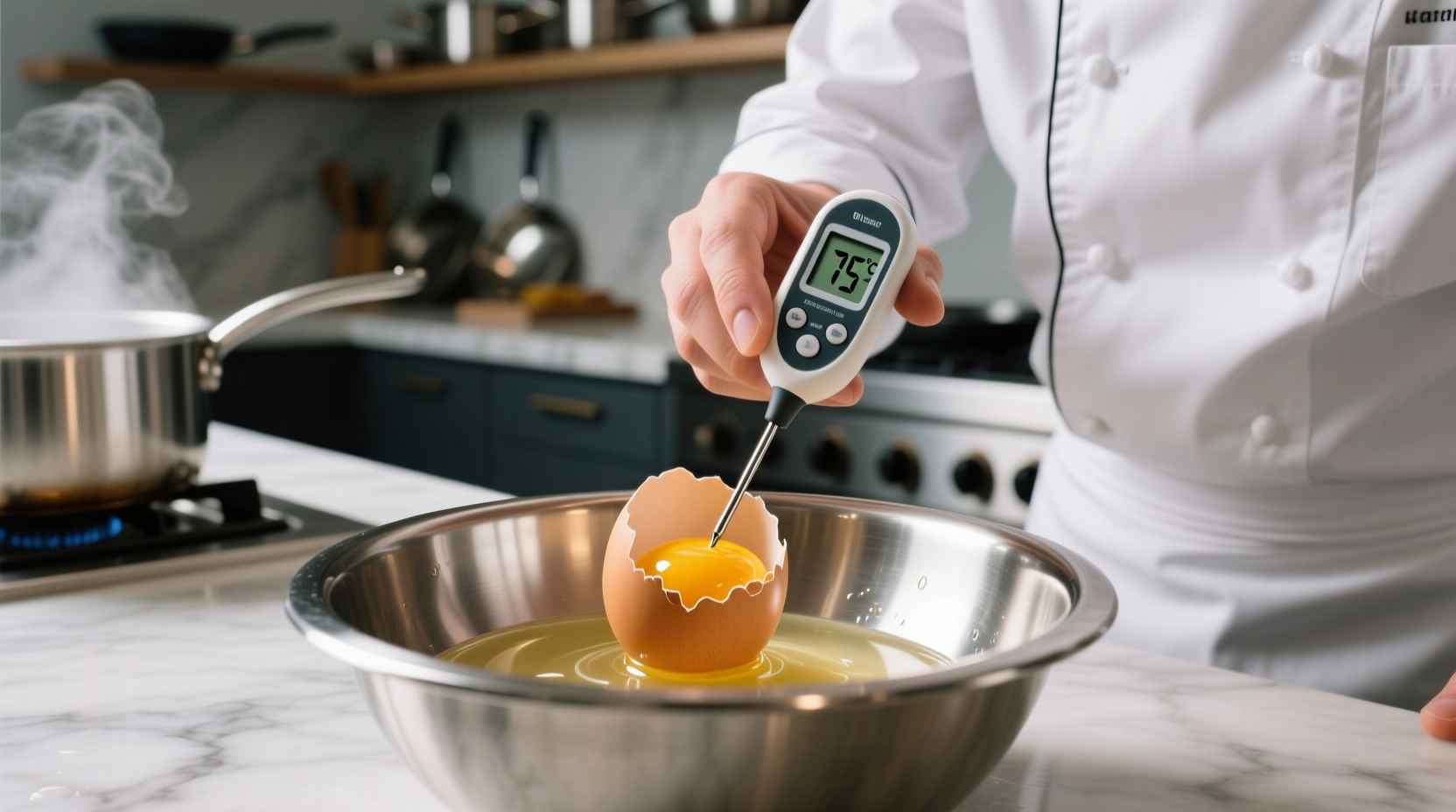Ever wondered why your scrambled eggs turn rubbery or your poached eggs won't hold shape? Temperature control is the secret weapon professional chefs use to transform simple eggs into culinary perfection. This guide delivers science-backed temperature guidelines for every egg preparation method, so you can consistently achieve restaurant-quality results at home.
The Science Behind Egg Protein Transformation
Eggs are remarkably temperature-sensitive due to their protein structure. As Harold McGee explains in On Food and Cooking, egg proteins begin denaturing at just 140°F (60°C). The whites coagulate between 144-149°F (62-65°C), while yolks set at 149-158°F (65-70°C). Understanding these precise thresholds prevents common cooking mistakes.
| Egg Component | Initial Coagulation | Complete Coagulation |
|---|---|---|
| Egg White (Albumen) | 144°F (62°C) | 149°F (65°C) |
| Egg Yolk | 149°F (65°C) | 158°F (70°C) |
| Whole Egg | 144°F (62°C) | 158°F (70°C) |
This precise temperature control explains why professional kitchens use thermometers for egg dishes. The narrow 14°F (8°C) window between perfect and overcooked eggs makes temperature monitoring essential.
Optimal Temperatures by Cooking Method
Scrambled Eggs: The 144-155°F Sweet Spot
For creamy scrambled eggs, maintain a consistent 144-155°F (62-68°C). Start with low heat (250°F/121°C skillet temperature) and remove from heat at 150°F (66°C)—residual cooking will reach the ideal 155°F (68°C). The USDA Food Safety and Inspection Service confirms that eggs are safe to eat at 160°F (71°C), but for scrambled eggs, removing them just below this threshold prevents rubberiness while ensuring safety.
Fried Eggs: Precision for Different Styles
The perfect fried egg requires precise temperature management:
- Sunny-side up: 144-149°F (62-65°C) whites with runny yolks (oil temp: 275°F/135°C)
- Over-easy: 149-154°F (65-68°C) with slightly thickened yolks
- Over-medium: 154-158°F (68-70°C) with partially set yolks
- Over-well: 158°F+ (70°C+) with fully set yolks
According to the American Egg Board's culinary guidelines, using a thermometer prevents the common mistake of cooking at too high heat, which causes rubbery texture and browned edges before the yolk reaches ideal consistency.
Poached Eggs: Water Temperature Matters Most
Contrary to popular belief, boiling water (212°F/100°C) ruins poached eggs. The ideal range is 160-180°F (71-82°C)—hot enough to set the egg but gentle enough to prevent tearing. Add vinegar to lower the coagulation temperature by 5-10°F (3-6°C), helping the egg hold shape. The Culinary Institute of America's research shows this temperature range produces the signature tender exterior and liquid center professional chefs achieve.

Safety Considerations: USDA Guidelines
Food safety is non-negotiable with eggs. The USDA Food Safety and Inspection Service mandates that eggs reach 160°F (71°C) for safe consumption, particularly important for vulnerable populations. This temperature destroys potential Salmonella bacteria while preserving quality. For dishes requiring raw eggs (like homemade mayonnaise), use pasteurized eggs heated to 140°F (60°C) for 3.5 minutes.
Tools for Temperature Precision
Accurate temperature measurement transforms egg cooking:
- Digital instant-read thermometers: Essential for scrambled eggs and custards
- Infrared thermometers: Perfect for checking pan surface temperatures
- Water thermometers: Critical for poaching and sous vide eggs
Calibrate thermometers regularly using ice water (32°F/0°C) or boiling water (212°F/100°C at sea level). Without a thermometer, use visual cues: scrambled eggs should look moist with no visible liquid egg remaining.
Advanced Temperature Techniques
Professional chefs use temperature gradients for perfect results. For example, starting scrambled eggs in a cold pan allows gradual, even cooking. With fried eggs, many chefs begin at medium heat (325°F/163°C) to set the bottom, then reduce to low (225°F/107°C) to gently cook the top without flipping. The French Laundry's technique for perfect poached eggs involves maintaining water at exactly 167°F (75°C) for 3 minutes 30 seconds—producing consistently flawless results.
Troubleshooting Common Problems
Rubbery scrambled eggs? You've exceeded 158°F (70°C). Cook at lower temperatures and remove from heat early. Broken poached eggs? Water is too hot—aim for 170°F (77°C) with gentle surface movement. Overcooked fried egg yolks? Reduce heat after flipping or cover the pan to steam-cook the top gently.











 浙公网安备
33010002000092号
浙公网安备
33010002000092号 浙B2-20120091-4
浙B2-20120091-4